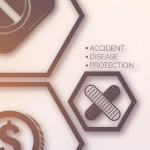HealthAffairs | Health Insurance Coverage Projections
Health Insurance Coverage Projections For The US Population And Sources Of Coverage, By Age, 2024–34
Abstract
In the Congressional Budget Office’s projections of health insurance coverage, 92.3 percent of the US population, or 316 million people, have coverage in 2024, and 7.7 percent, or 26 million, are uninsured. The uninsured share of the population will rise over the course of the next decade, before settling at 8.9 percent in 2034, largely as a result of the end of COVID-19 pandemic–related Medicaid policies, the expiration of enhanced subsidies available through the Affordable Care Act health insurance Marketplaces, and a surge in immigration that began in 2022. The largest increase in the uninsured population will be among adults ages 19–44. Employment-based coverage will be the predominant source of health insurance, and as the population ages, Medicare enrollment will grow significantly. After greater-than-expected enrollment in 2023, Marketplace enrollment is projected to reach an all-time high of twenty-three million people in 2025.

